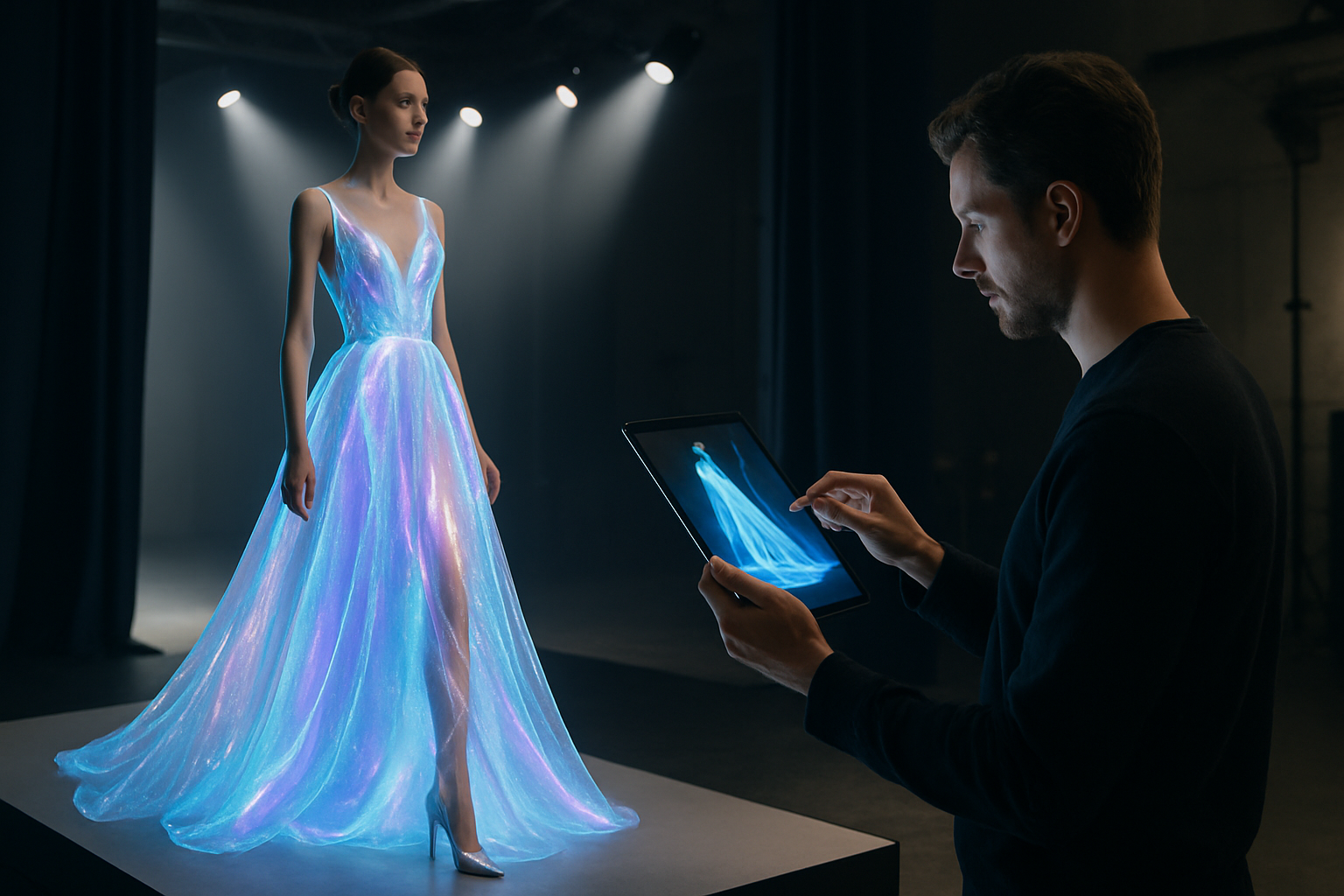Holographic Fashion: The Future of Couture
In a world where technology and fashion increasingly intertwine, holographic clothing is emerging as a groundbreaking frontier in the couture industry. This cutting-edge trend blends digital artistry with high fashion, creating ethereal garments that exist both in the physical and virtual realms. As designers push the boundaries of what's possible, holographic fashion is redefining the very concept of wearable art.

As technology advanced, fashion designers began incorporating holographic elements into their creations. Initially, this manifested as shimmering fabrics and iridescent accessories that mimicked the effect of holograms. However, it wasn’t until the late 2010s that true holographic garments began to materialize, thanks to advancements in augmented reality and projection mapping technologies.
The Technology Behind the Magic
At the heart of holographic fashion lies a complex interplay of cutting-edge technologies. High-powered projectors, motion sensors, and sophisticated software work in tandem to create the illusion of clothing that shifts, changes, and responds to its environment. Some designs utilize specialized fabrics embedded with microscopic prisms that refract light, while others rely on wearable projectors that cast images directly onto the body.
One of the most exciting developments in this field is the integration of artificial intelligence. AI algorithms can now analyze a wearer’s surroundings and adjust the holographic display in real-time, creating truly responsive and interactive garments that blur the line between fashion and performance art.
Runway Revolution: Holographs Hit the Catwalk
The fashion world’s embrace of holographic couture has been nothing short of revolutionary. High-profile designers and avant-garde labels alike have begun incorporating holographic elements into their collections, dazzling audiences with otherworldly creations that defy traditional notions of fabric and form.
In recent seasons, major fashion weeks have witnessed a surge in holographic presentations. Models strut down runways wearing shimmering gowns that transform from one design to another with each step, or jackets that display moving images as if they were living canvases. These shows not only showcase the technical prowess of the designers but also challenge our perceptions of what clothing can be in the digital age.
Beyond the Catwalk: Practical Applications
While holographic fashion may seem like a concept reserved for high-end runway shows, its potential applications extend far beyond the world of haute couture. Innovators in the field are exploring ways to bring this technology to everyday wear, opening up new possibilities for self-expression and functionality.
Imagine a business suit that can instantly change its appearance to suit different settings, or workout gear that provides real-time feedback on your performance through holographic displays. These are just a few of the practical applications being developed by forward-thinking designers and tech companies.
Moreover, the sustainability implications of holographic fashion are significant. By reducing the need for physical garments, this technology could potentially decrease the fashion industry’s environmental footprint, addressing concerns about waste and overproduction.
Challenges and Ethical Considerations
As with any emerging technology, holographic fashion faces its share of challenges and ethical questions. Privacy concerns arise when considering garments that can collect and display data about the wearer or their surroundings. There are also questions about the potential for digital manipulation and the blurring of reality in public spaces.
Additionally, the high cost and technical complexity of holographic clothing currently limit its accessibility to a select few. Critics argue that this could exacerbate existing inequalities in the fashion world, creating an even wider gap between haute couture and mainstream fashion.
Designers and technologists in the field are actively working to address these concerns, developing guidelines for responsible use of holographic fashion and exploring ways to make the technology more accessible to a broader audience.
The Future of Fashion: A Holographic Horizon
As we look to the future, it’s clear that holographic fashion represents more than just a passing trend. It signifies a fundamental shift in how we conceive of and interact with clothing. The possibilities are as limitless as the imagination of designers and the capabilities of technology.
From personalized holographic accessories to fully immersive fashion experiences, the coming years promise to bring even more innovation in this space. As the lines between physical and digital continue to blur, holographic fashion stands poised to redefine not just what we wear, but how we express ourselves in an increasingly digital world.
The revolution is here, shimmering and shifting before our eyes. Holographic fashion is not just changing what we wear; it’s transforming our very relationship with clothing, self-expression, and the intersection of art and technology. As this exciting field continues to evolve, one thing is certain: the future of fashion is bright, dynamic, and holographically enhanced.





